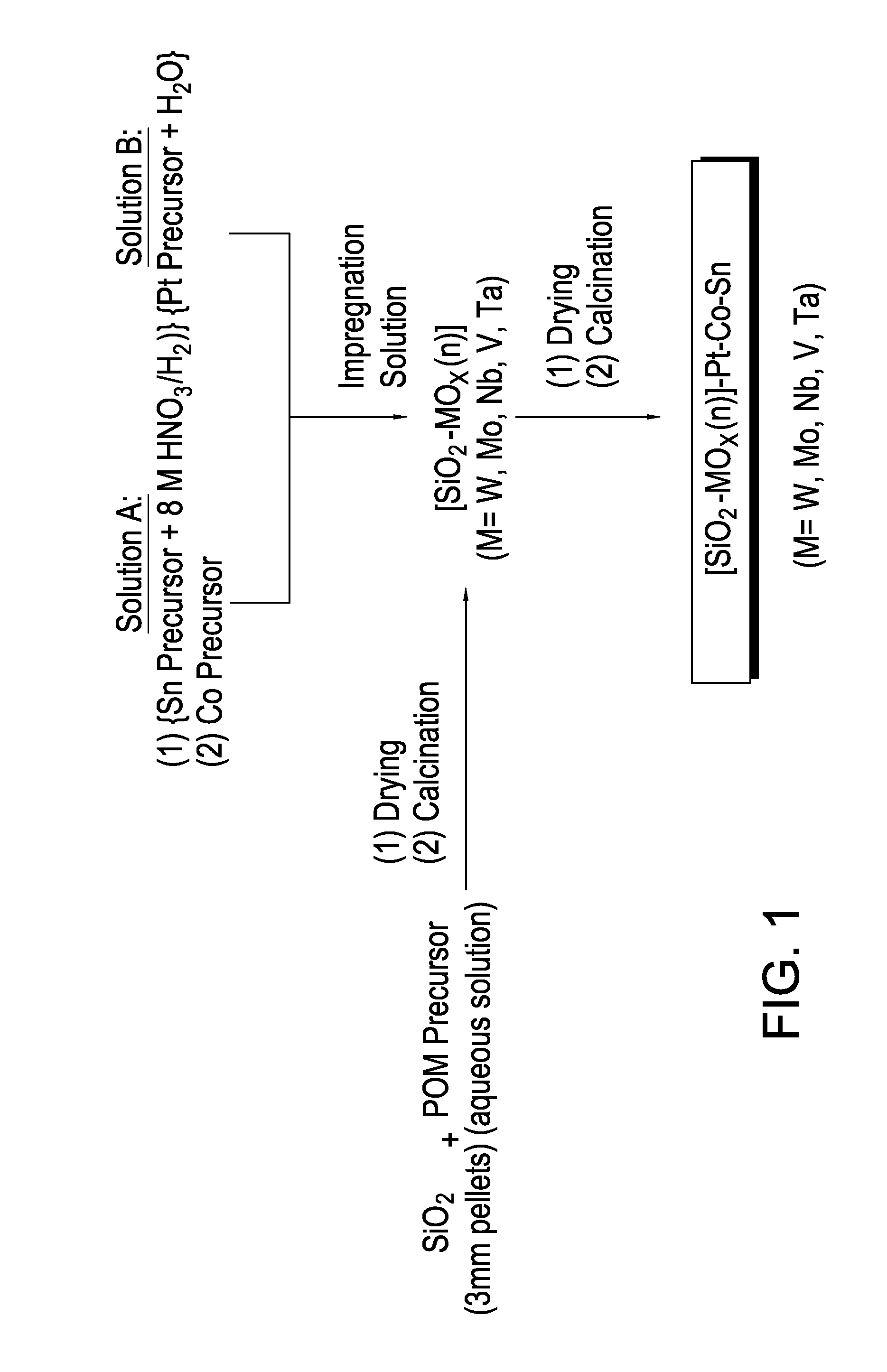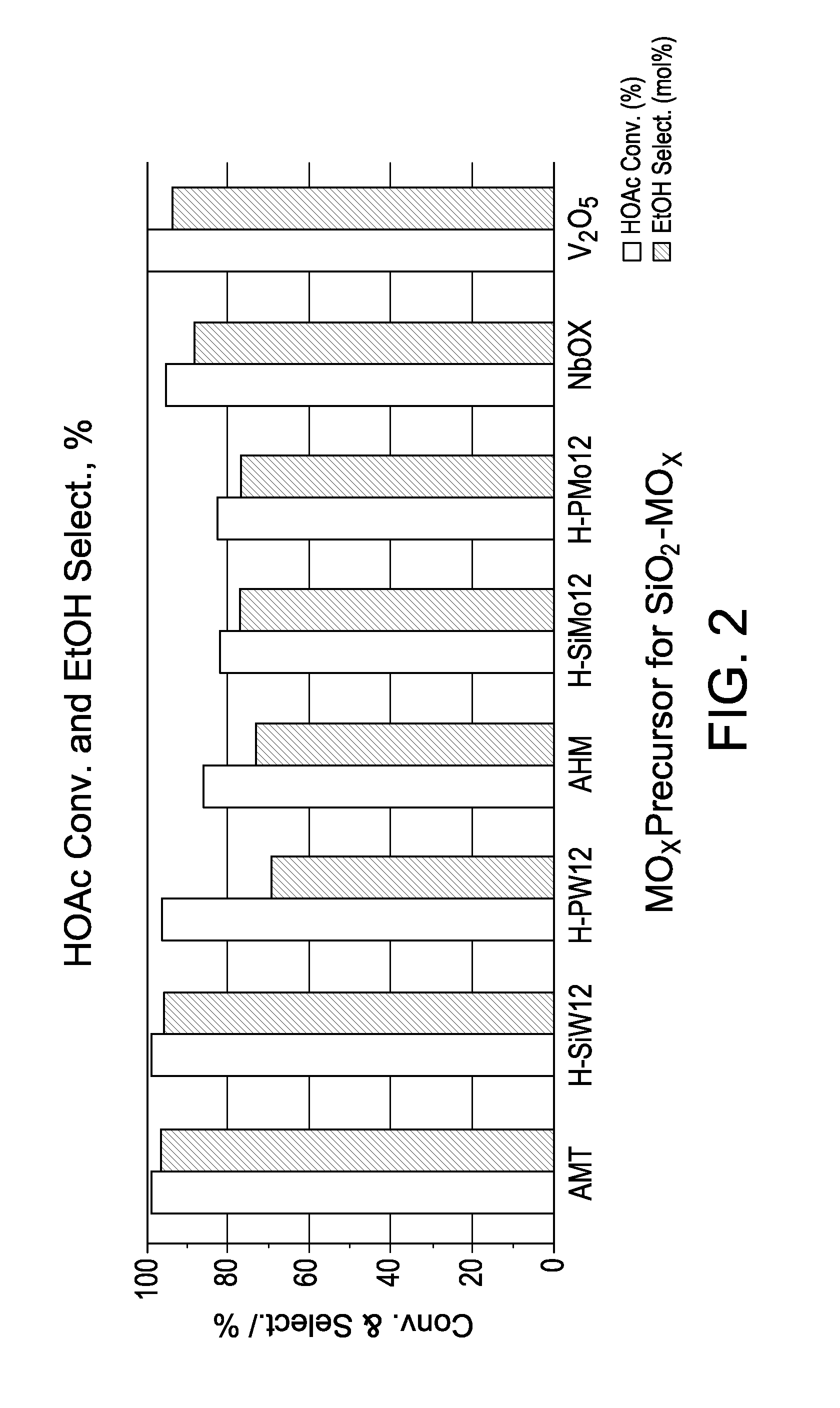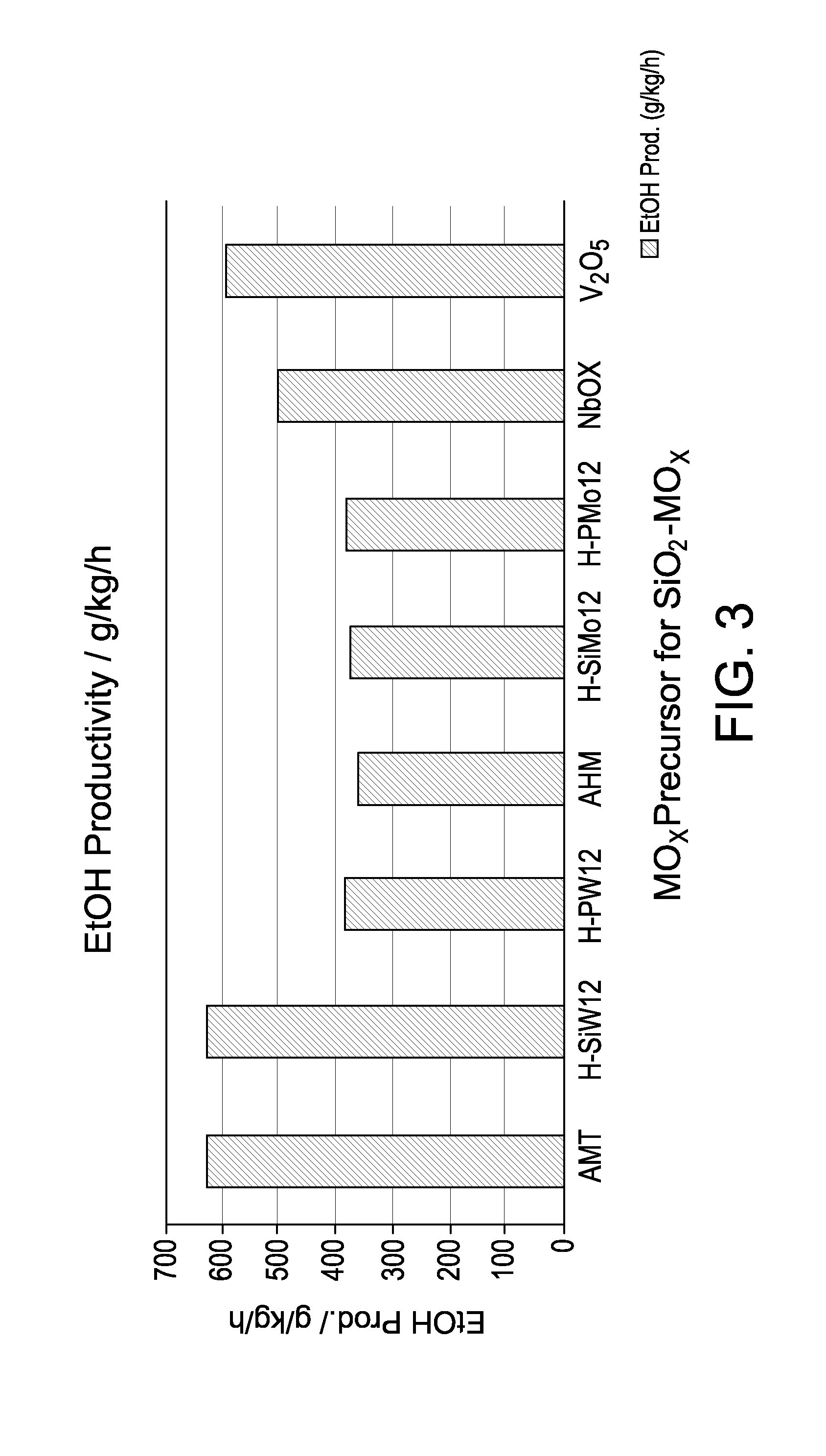Hydrogenation catalysts prepared from polyoxometalate precursors and process for using same to produce ethanol while minimizing diethyl ether formation
a technology of polyoxometalate and catalyst, which is applied in the direction of catalyst activation/preparation, metal/metal-oxide/metal-hydroxide catalyst, physical/chemical process catalyst, etc., can solve the problem of catalysts which are prohibitively expensive and/or non-selective for the formation of ethanol, and the required operating temperature and pressure is excessiv
- Summary
- Abstract
- Description
- Claims
- Application Information
AI Technical Summary
Benefits of technology
Problems solved by technology
Method used
Image
Examples
examples 1-8
I. Examples 1-8
[0091]Eight Platinum / tin / cobalt catalysts were prepared in Examples 1-8 using different support modifiers. The resulting catalysts were then tested in a hydrogenation unit with a mixed feedstock. The catalyst compositions for Example 1-8 are provided in Table 2.
[0092]
TABLE 2ExampleCatalyst1SiO2—WO3(12)—Pt(1)—Co(4.8)—Sn(4.1)2SiO2—Si(1 / 12)WO3(12)—Pt(1)—Co(4.8)—Sn(4.1)3SiO2—P(1 / 12)WO3(12)—Pt(1)—Co(4.8)Sn(4.1)4SiO2—MoO3(7.4)—Pt(1)—Co(4.8)—Sn(4.1)5SiO2—Si(1 / 12)MoO3(7.4)—Pt(1)—Co(4.8)—Sn(4.1)6SiO2—P(1 / 12)MoO3(7.4)—Pt(1)—Co(4.8)—Sn(4.1)7SiO2—Nb2O5(7.4)—Pt(1)—Co(4.8)—Sn(4.1)8SiO2—V2O5(4.8)—Pt(1)—Co(4.8)—Sn(4.1)
Catalyst Preparation Overview.
[0093]A high surface area (HSA) commercial SiO2 support (HSA SS #61138, 3 mm pellets, NorPro) was used as starting material for the transition metal oxide modified supports. In general, the catalyst supports were prepared by impregnating the SiO2 extrudates with an aqueous solution of the corresponding W, Mo, Nb, or V polyoxometalate (POM) ...
example 1
SiO2—WO3(12)
[0101]For this preparation, 176.0 g of the SiO2 support (NorPro, 3 mm pellets) was used. The aqueous impregnation solution was prepared by dissolving 25.504 g (8.63 mmol) of ammonium metatungstate hydrate (AMT) in 250 mL of deionized H2O. The support was then impregnated using incipient wetness technique, and the material was dried using a rotor evaporator, followed by drying at 120° C. overnight under circulating air. The dried material was then calcined at 550° C. / air for six hours. Yield: ˜200 g of light yellow extrudates. The precious and active metals were then impregnated onto the modified support according to the Catalyst Preparation procedure described below.
example 2
SiO2—Si(1 / 12)WO3(12)
[0102]For this preparation, 22.0 g of the SiO2 support (NorPro, 3 mm pellets) was used. The aqueous impregnation solution was prepared by dissolving 3.104 g (1.08 mmol) of silicotungstic acid hydrate in 32 ml of deionized H2O. The support was then impregnated using incipient wetness technique, and the material was dried using a rotor evaporator, followed by drying at 120° C. overnight under circulating air. The dried material was then calcined at 550° C. / air for six hours. Yield: ˜25 g of light yellow extrudates. The precious and active metals were then impregnated onto the modified support according to the Catalyst Preparation procedure described below.
PUM
| Property | Measurement | Unit |
|---|---|---|
| pressure | aaaaa | aaaaa |
| pore diameter | aaaaa | aaaaa |
| pore diameter | aaaaa | aaaaa |
Abstract
Description
Claims
Application Information
 Login to View More
Login to View More - R&D
- Intellectual Property
- Life Sciences
- Materials
- Tech Scout
- Unparalleled Data Quality
- Higher Quality Content
- 60% Fewer Hallucinations
Browse by: Latest US Patents, China's latest patents, Technical Efficacy Thesaurus, Application Domain, Technology Topic, Popular Technical Reports.
© 2025 PatSnap. All rights reserved.Legal|Privacy policy|Modern Slavery Act Transparency Statement|Sitemap|About US| Contact US: help@patsnap.com



